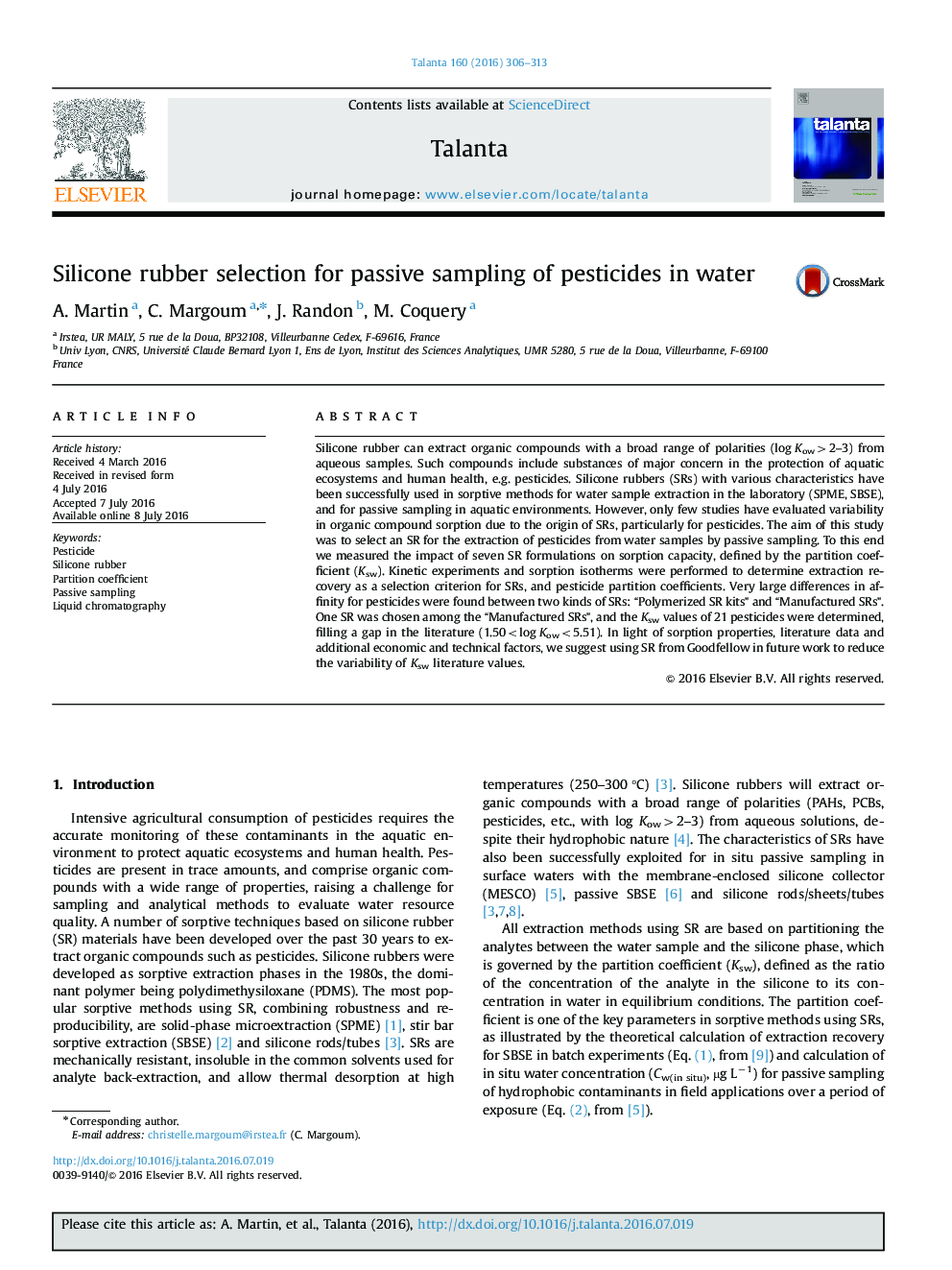| Article ID | Journal | Published Year | Pages | File Type |
|---|---|---|---|---|
| 1243262 | Talanta | 2016 | 8 Pages |
•We studied the impact of silicone rubber (SR) formulation for sorption of pesticides.•Very large differences in affinity for pesticides were found between two kinds of SR.•Ksw values between SR and water fill gaps in literature data for 21 pesticides.•We strongly advise using silicone rubbers from the supplier Goodfellow.
Silicone rubber can extract organic compounds with a broad range of polarities (log Kow>2–3) from aqueous samples. Such compounds include substances of major concern in the protection of aquatic ecosystems and human health, e.g. pesticides. Silicone rubbers (SRs) with various characteristics have been successfully used in sorptive methods for water sample extraction in the laboratory (SPME, SBSE), and for passive sampling in aquatic environments. However, only few studies have evaluated variability in organic compound sorption due to the origin of SRs, particularly for pesticides. The aim of this study was to select an SR for the extraction of pesticides from water samples by passive sampling. To this end we measured the impact of seven SR formulations on sorption capacity, defined by the partition coefficient (Ksw). Kinetic experiments and sorption isotherms were performed to determine extraction recovery as a selection criterion for SRs, and pesticide partition coefficients. Very large differences in affinity for pesticides were found between two kinds of SRs: “Polymerized SR kits” and “Manufactured SRs”. One SR was chosen among the “Manufactured SRs”, and the Ksw values of 21 pesticides were determined, filling a gap in the literature (1.50 Graphical abstractFigure optionsDownload full-size imageDownload as PowerPoint slide
